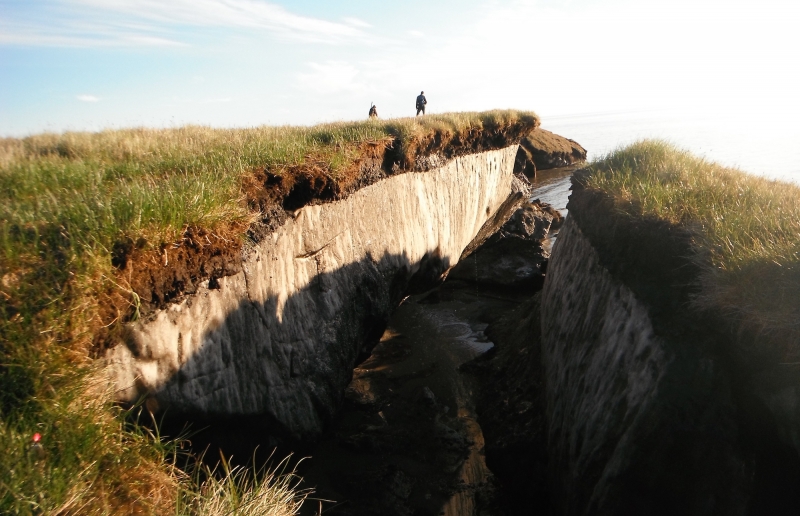Solving the Arctic Mystery: The True Impact of Permafrost Thaw on Global Climate

No matter where you live, you are affected by Earth’s cryosphere, or its coldest, most remote places, where ice and snow reign. Chiefly, permafrost stores a lot of carbon, and permafrost thaw, which global warming is triggering on an unprecedented scale, influences the global climate. Just how much permafrost thaw is impacting the climate, however, was a mystery until an NCEAS working group cracked the code.
The working group was the first to not only uncover the magnitude of carbon stored in permafrost and how much of that global warming could potentially release, but also explain the many processes that determine its effect on the global climate.
By synthesizing data sets from sites around the Arctic, they calculated that, by the year 2100, permafrost thawing could cumulatively contribute 15 times more carbon to the atmosphere than current annual human emissions. That amount won’t dwarf potential cumulative human emissions in the same time frame, but will certainly accelerate climate change and underscores the urgency for action.
Their science is now informing global measures and targets for combating climate change, as outlined by the International Panel on Climate Change (IPCC). In particular, they helped shape the latest IPCC Special Report on Oceans and Cryosphere in a Changing Climate (SROCC), published in December 2019, which filled gaps in the Paris Accord, an international policy framework for addressing climate change that had previously overlooked permafrost thaw in its limits for allowable carbon emissions.
“Permafrost is a wild card,” said lead researcher Ted Schuur, who is a professor at Northern Arizona University. “The synthesis approach really helped crack open a lot of the assessment that was possible.”
In their first analysis, published in 2008, Schuur and his team addressed an important need - more data - and created a roadmap for filling the knowledge gaps, subsequently motivating more than a decade of research to assemble those data. This first effort also led to Schuur’s creation of the Permafrost Carbon Network, which he says borrows principles from NCEAS, such as data sharing and collaboration in pursuit of understanding the bigger picture.
“People were observing [permafrost thawing] at different places across the Arctic, but we really needed to link up different sites and previously synthesized products,” said Schuur.
With continued synthesis research through NCEAS-operated Arctic Data Center, Schuur and his colleagues are enabling permafrost thaw to be part of the international discussions about reducing emissions, such as those at the annual Conference of Parties (COP) meetings, that will help determine the future of our planet.
